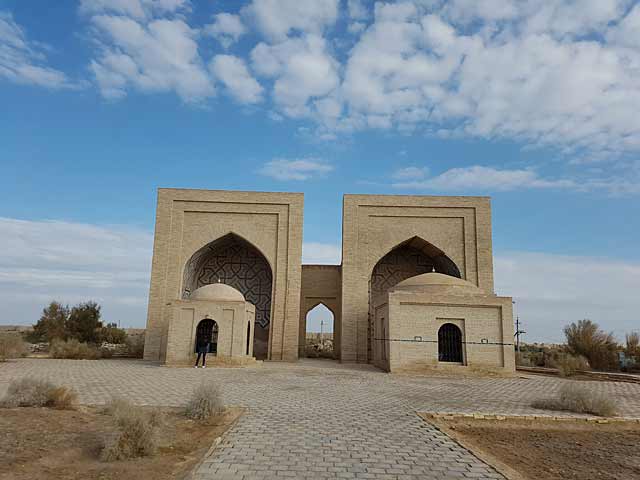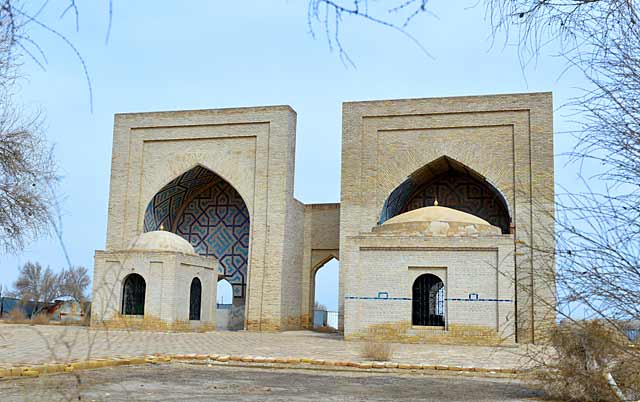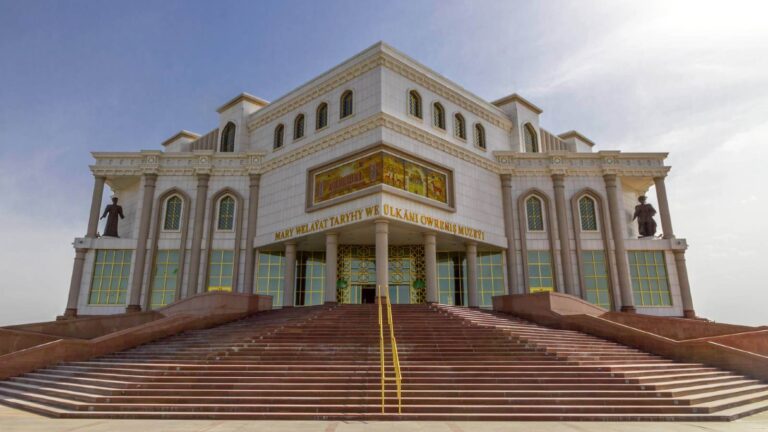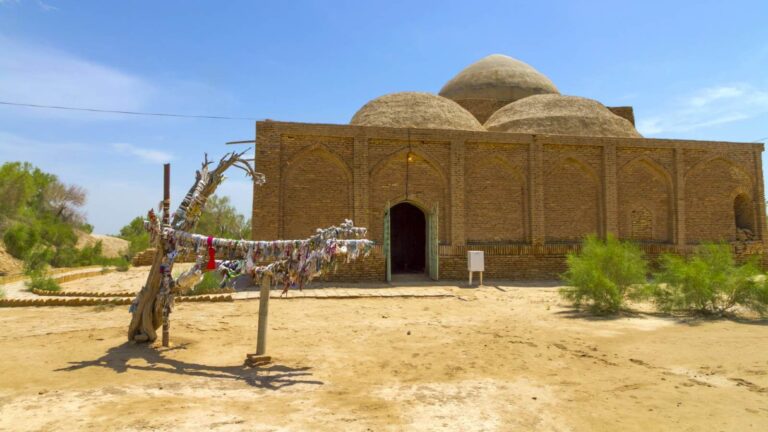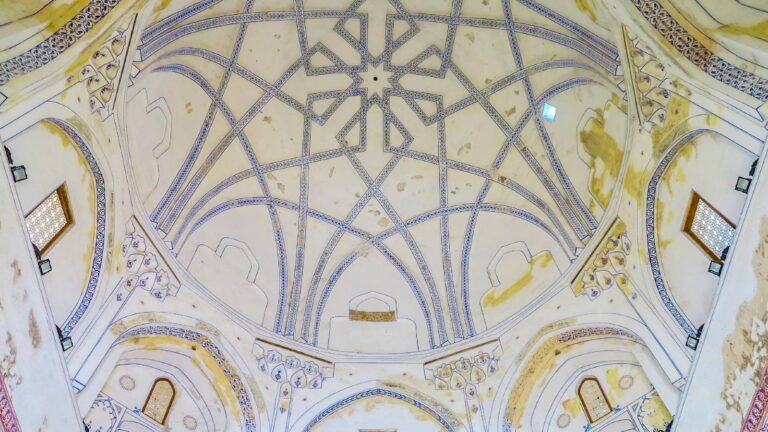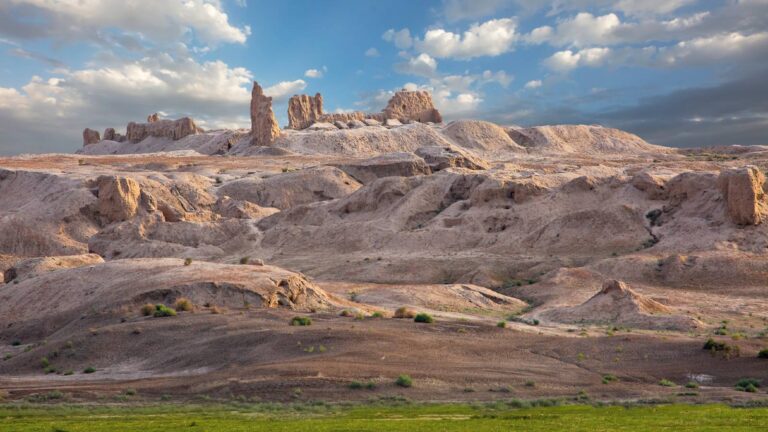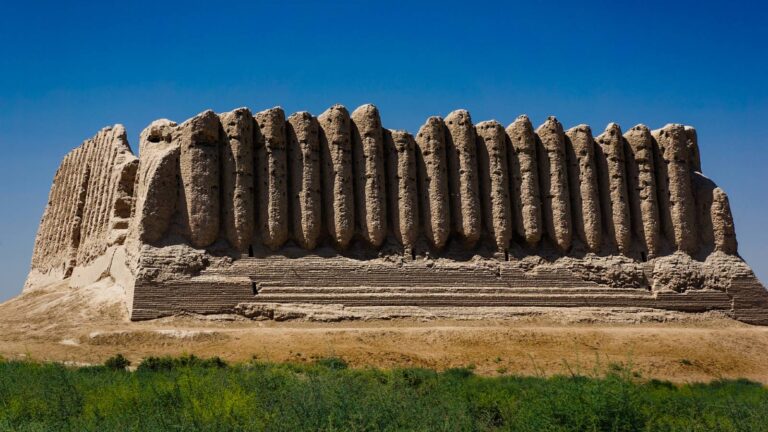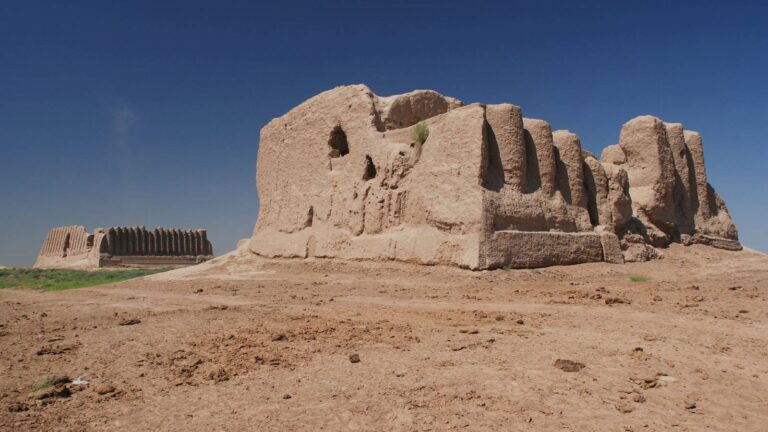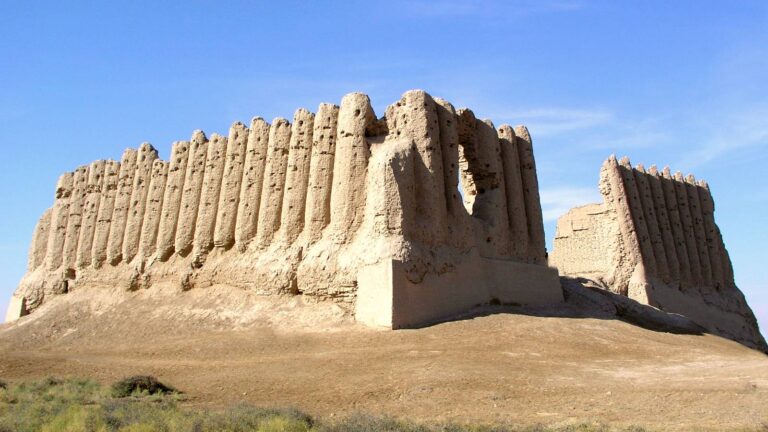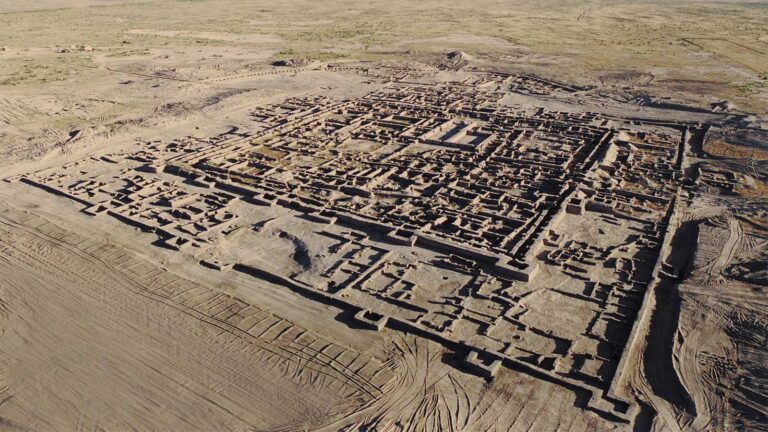Getting There
The Askhab Mausoleum is located in the southern section of Sultan Kala. It is easily reached by taking the first right turn after leaving the ticket office, passing Bibi Kala, then continuing on the paved road to the left of Greater Kyz Kala until the complex is seen.
What to Expect
One of the most important pilgrimage sites in Turkmenistan are the mausoleums built for two Islamic askhab (companions of the Prophet), Al-Hakim ibn Amr al-Jafari and Buraida ibn al-Huseib al-Islami. The two tomb chambers sit in front of reconstructed Timurid ayvans (monumental portals) that honor two askhab.
Apart from the tombs and the aywans, a small sardoba (water cistern) also stands nearby. In past generations it was used as a source of cool, clean water, and indeed, water may still be found in its sheltered interior.
History
The Askhab Mausoleums are a Timurid-era shrine in Merv dedicated to two of the Prophet Muhammad’s earliest companions, Abu Dhar al-Ghifari and Abu Buraidah al-Aslami, among the earliest converts to Islam. Taking the form of two side-by-side aywans (monumental portals), the monuments were likely first built in the Seljuq era (9th-12th centuries) but were subsequently destroyed in the Mongol invasions of the early 13th century. The Timurids rebuilt them in the 15th or 16th centuries.
Facilities Available
Other buildings on site include a modern prayer hall, built in 1993, as well as a two-room askana (refectory) north of the sardoba.

